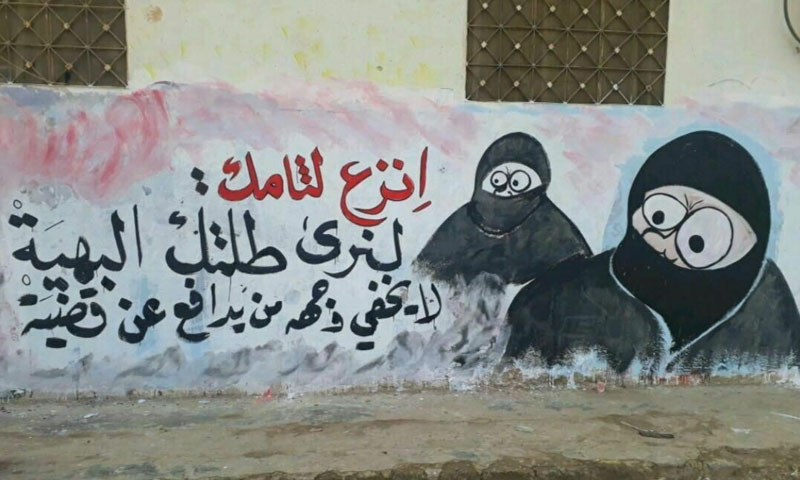Between those we are calling for a “sedition,” the regime’s cells and the members of the “Islamic State,” as well as the people who have interests, the identity of the assassins behind the killing wave that took over Idlib, targeting both civilians and gun men in different areas of the governorate, since (Saturday) April 26, was lost.
The wave produced what has come to be called “assassination cells,” whose members are discreet in terms of identity and affiliation.
The assassinations’ series ensued hours after the intra factional fighting was stopped, the two sides of which were “Hay’at Tahrir al-Sham” (HTS) and the “Syrian Liberation Front,” formed in March 2018, by the merger of the two movements of “Ahrar al-Sham” and “Nour al-Din al-Zenki,” according an agreement that followed the killing of hundreds of both gun men and civilians, since the 20TH of last March.
Many questions have been raised in relation to the attempted and implemented assassinations, which targeted leaders of both sides, Shaiks and prestigious figures, the most prominent of whom is the scholar Abdullah al-Muhaysini, who was injured due to an explosive device while his car passed through the city of Saraqib, in sync to the “Salivation Government” announcement of an emergency and preparedness state.
Some Assassinations Targeted Leaders
Activists have counted more than 20 attempted and implemented assassinations in the first 48 hours of the wave’s launch. On (Friday) April 27, the Head of the “Free Police” in the city of Dana, the dissident lieutenant colonel Ahmad al-Jarow, died in the explosion of a device in his car in Northern Idlib.
A leader of “Jaysh al-Izza,” Khalid al-Ma’rati, with two other members of the same faction were shot to death by anonymous persons in Khan Shaykhun, in Southern Idlib.
The first victim of the anonymous killings was “Abu al-Ward Kafer Batikh,” a leader from “Tahrir al-Sham,” in Maarrat al-Nu’man. “Abu Salim Binnish” a leader in “al-Ahrar Army,” was also shot to death anonymously at the outskirts of the city of Binnish, in the same day.
The attempted and executed assassinations have also targeted displaced people, pharmacists, money changers and fighters of various factions in the governorate, as well as activists and prestigious personalities.
Exchanged Accusations
The security group in “Tahrir al-Sham” has announced arresting a cell in rural Idlib but did not mention further details about its members’ identity; “Ebaa” agency has quoted the security official, Obida al-Shami, that confrontations have taken place with other cells, some of which were accused of affiliation with “Ahrar al-Sham”.
At the beginning of the assassinations wave, the two sides to the confrontations, through their members, have exchanged accusations. Omar Hozifah, the reconciliation mediator between the two sides, commented on the situation saying that “it seems that peace and reconciliation between the brothers do not satisfy those calling for sedations; so, there was a need for assassinations and physical elimination, which they arrange every now and then.”
Through his “Telegram” account, he called that “there is no need for rush accusations and suspicions, until a proof is found, and things are made clear.”
Various entities in Idlib raced to show their intention to control the security situation in the governorate; the “Salvation Government” said that it has activated police patrols for the day’s long, in cooperation with the neighborhoods’ committees.
Ghaleb al-Romi, and official of one of the “Liberation Front’s” checkpoints, told Enab Baladi that the assassinations are, in the first place, targeting the revolution’s stability; they aim to entice disputes among the factions, especially after the reconciliation.
He considers that the “sudden” rapid tempo of these operations, shows that they are executed by the same entity, under the authority of which many security cells function in Idlib, accusing the Syrian regime and its intelligence forces directly, and attributing the accusation to the idea that “the assassinations have targeted all the revolutionary components, including faction fighters, activists and civil defense members, which proves the theory correct.”
In the shadow of the security chaos which the governorate witnessed last year, activists and military figures have warned against wearing veil, face cover, particularly at the check points, run by the factions spreading in Idlib.
Some of the governorate’s people believe that the cells of “al-Qaeda” “Jund al-Aqsa” also have a role in the assassinations, while others call it an “internal elimination operation,” which paves the way for a new phase under which the power balance in the area would change.
Six Items under the Cease Fighting Agreement
The sides to the fighting which continued for more than two months in Idlib and the western countryside of Aleppo have made an agreement of six items, on April 24, the first of which provides for stopping the fighting permanently and entirely, providing that the situation in the areas’ which witnessed the fighting shall remain as it is.
The arrest operations conducted by both sides shall stop, roads shall be opened, and checkpoints eliminated to facilitate for the displaced people’s return to their houses, according to a joint statement by “Tahrir al-Sham” and the “Syrian Liberation Front”.
The agreement also obliges all the sides to stop the media “enticement” on official and supportive accounts, according to the statement; it confirms paying efforts to release the detainees from both sides according to a time line, the formation of a committee of both sides and another to be an intermediary to follow up the agreement and its implementation.
The agreement included talks about initiating expanded and continuance consultations to arrive at an integral solution at the military, political, administrative and judicial levels.











